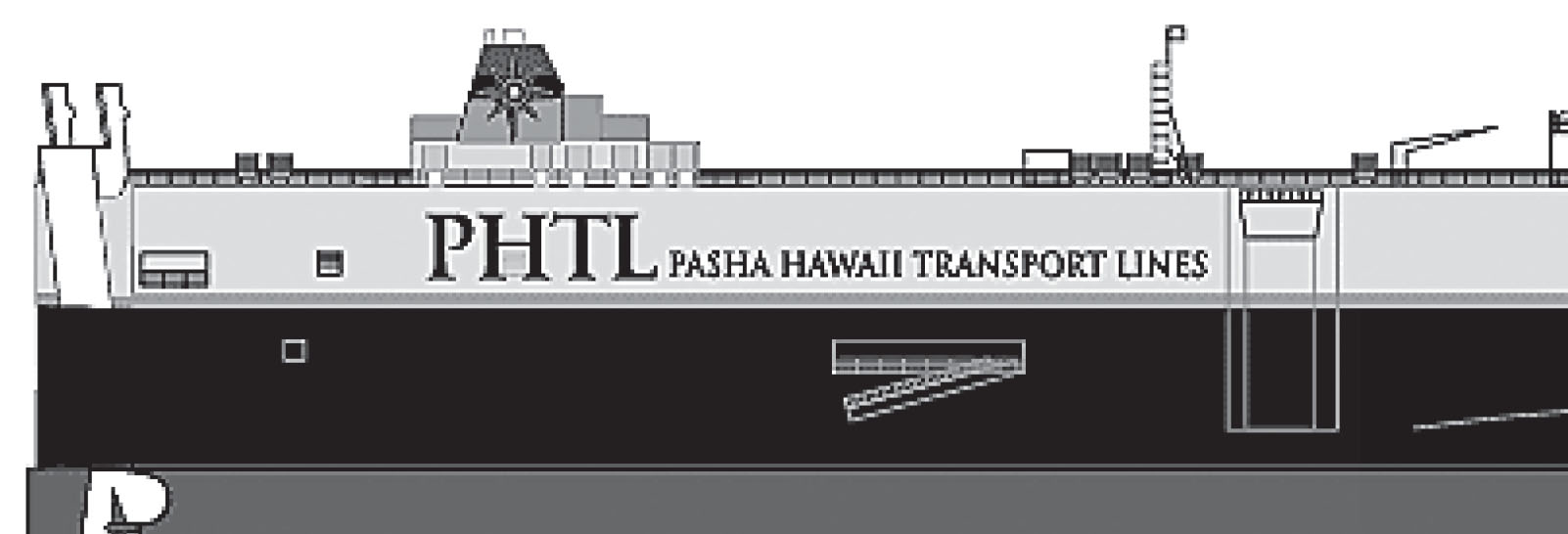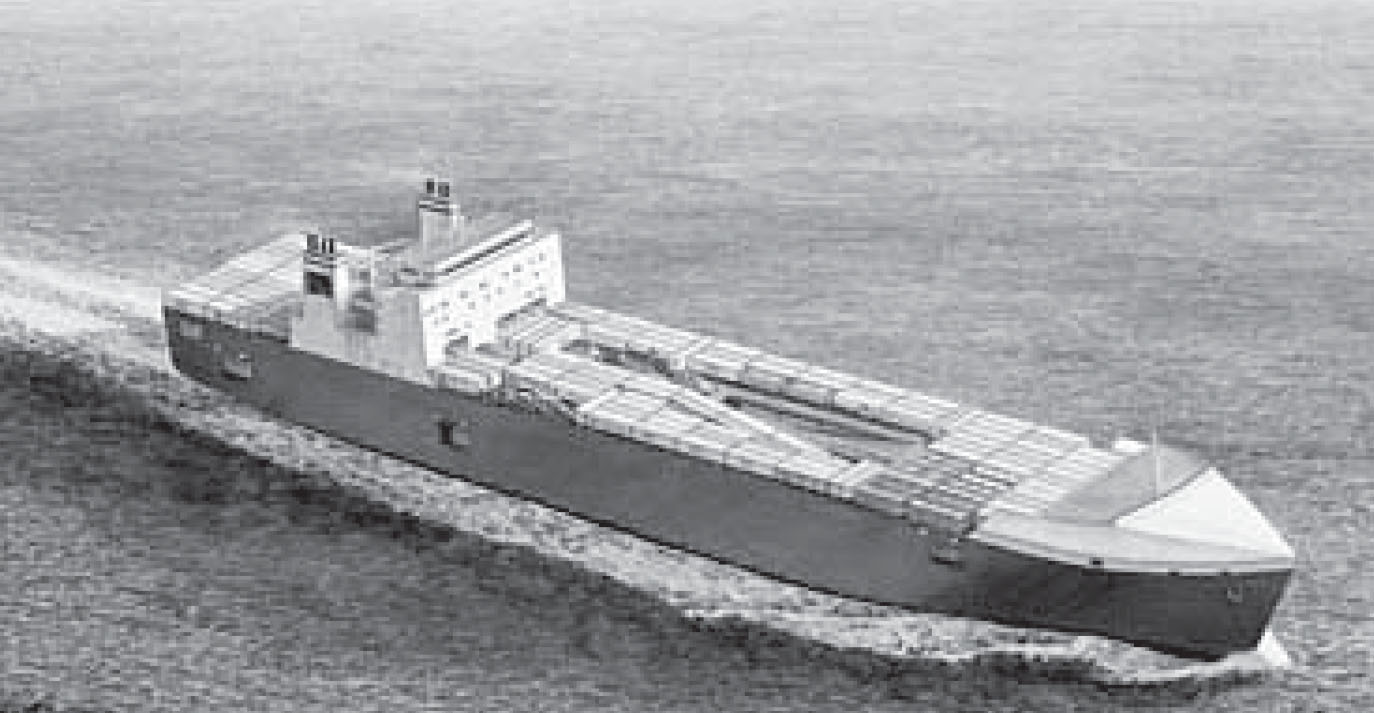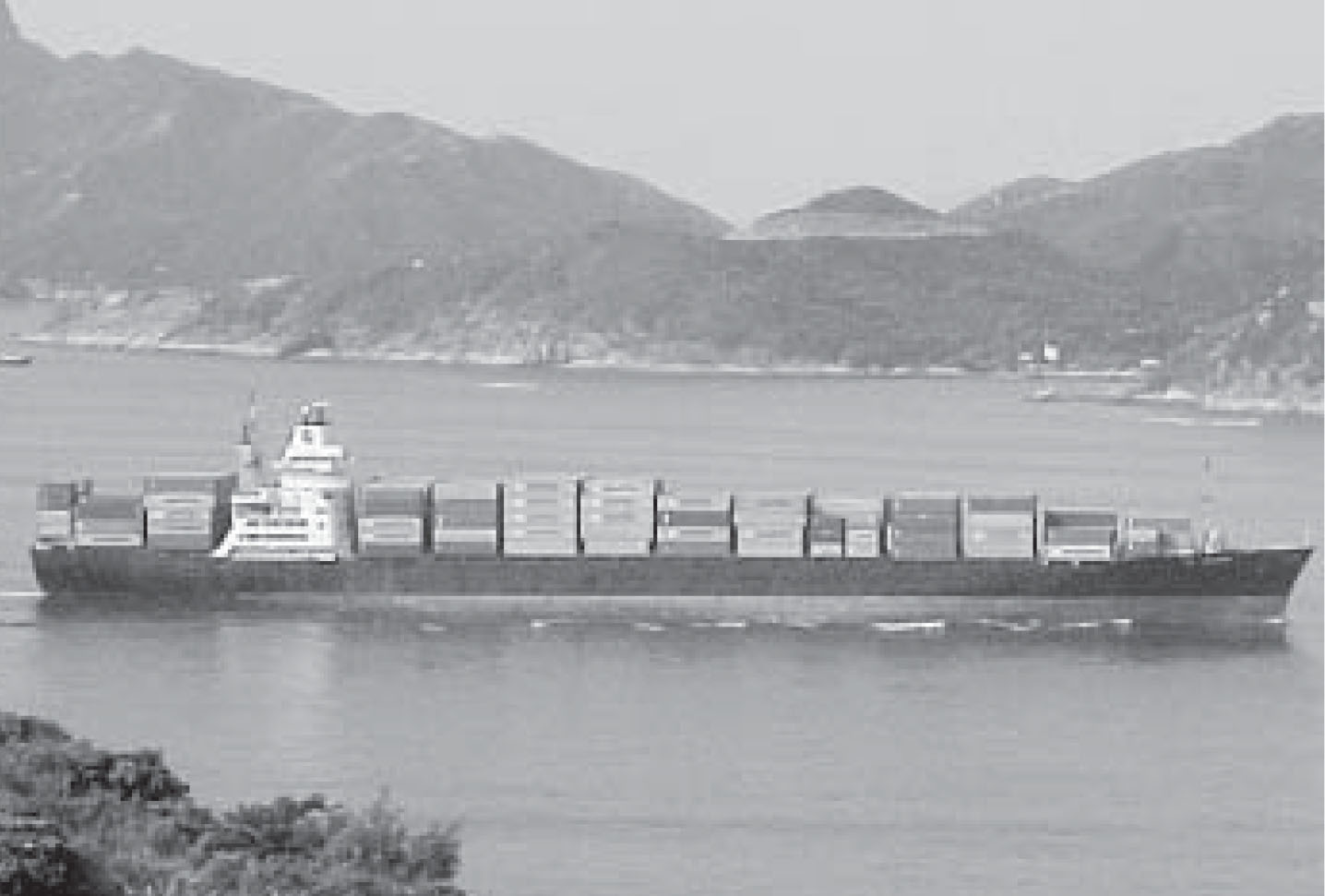Pasha Hawaii Transport Lines (PHTL) is scheduled to enter the West Coast-Hawaii shipping market in late 2004 with the Jean Anne, a brand-new, $70 million U.S. made ship, specifically designed to handle cars and trucks. The highly specialized cargo ship is called a “pure car and truck carrier” (PCTC) and the one being built for Pasha by VT Halter Marine Yard in Pascagoula, Mississippi, will have the capacity to carry as many as 4,300 cars, buses or trucks. The 579 foot vessel will have 10 decks and a 100-ton stern ramp which will allow cars to be driven on and off the ship.
A second, identical ship is scheduled for delivery in 2005. Work on the Jean Anne was delayed by 18 months when Friede Goldman, the parent company of Halter Marine filed for bankruptcy relief in April 2001. Their ship building facility in Pascagoula, Mississippi was finally acquired by Vision Technologies Systems and work was resumed on the Jean Anne.
Pure Car and Truck Carrier ships are supposed to reduce damage to cars by eliminating the need to rack or floor-load vehicles. The ships also reduce the number of steps in loading and unloading compared with containerized shipping of cars. Pasha estimates the ship can be loaded at a rate of 1,000 vehicles every four hours (see their website at www.pashagroup.com/ and go to PHTL).
PHTL is a joint venture between the Pasha Group, a California-based automobile handling and logistics company, and Van Ommeren (USA), a Connecticut-based ship owner. The ship will meet all Jones Act requirements—U.S. owned, built, and crewed—which will allow it to move cargo between U.S. ports and between the U.S. and foreign ports. Mr. van Reesema, President and principle owner of Van Ommeren Shipping also sits on the board of directors of Trailer Bridge, which competes with Horizon and SaltChuk in the Puerto Rican market. Presently, Jones Act shipping in Hawaii has been served primarily by Matson Navigation and Horizon Lines (formerly CSX Lines). Matson has 64% of the Hawaii market with 15 ships, including two ro-ros, and Horizon has a 36% share of the market with 8 container ships. The entry of PHTL into the Hawaii market is expected to impact Matson’s share of ro-ro cargo.
New players in Hawaii shipping

SHIP'S CHARACTERISTICS - TECHNICAL SPECIFICATIONS AND MAIN PARTICULARS
Length: 579.72 ft / 76.70 m
Deadweight: 13,000 metric tons
Quarter Stern Ramp Strength: 100 tons
Vehicle Capacity: 4,300
Breadth: 102.03 ft / 31.30 m
Number of Decks: 10
Deck Capacity: 387,000 sq. ft. / 36,000 m
Draft: 28.71 ft / 8.75 m
Hoistable Decks: 3
Speed Service: 20 knots
SaltChuk Resources
altChuk Resources of Seattle, Washington entered the Hawaii market in 1999 when it bought Young Brothers and Hawaiian
Tug and Barge from Hawaiian Electric Industries. SaltChuk (“chuk” is a native Indian word for water) is a privately owned
family investment company which owns 15 companies and employs over 4,500 people. Some of the companies owned by
SaltChuk include Totem Ocean Trailer Express (TOTE), Foss Maritime, AMNAV Maritime Services, Young Brothers/Hawai-
ian Tug & Barge, and Sea Star service in Puerto Rico – a part- nership with Matson Navigation.
SaltChuk’s TOTE has 61% of the domestic shipping business to Alaska with five roll-on/roll-off cargo ships operating between Alaska and Washington state. The other 39% of the market is held by Horizon (formerly CSX Lines) which uses three container ships.
Two of TOTE’s newest ships— the Midnight Sun and North Star—were just put into service this year. The ships were built by
General Dynamics National Steel and Shipbuilding Company in San Diego, California, for $310 million and are the first commercial dry cargo vessels to be built in the US in 10 years. According to SaltChuk’s chairman of the board Mike Garvey, the money invested in the ships are more than all the profits made by TOTE in the last 27 years and represent a major investment in the future of Alaskan shipping.
The two Orca-Class trailer ships are double-hulled, 840-feet- long, 118-feet-wide roll-on/roll-off cargo ships and can carry trailers as large as 53 feet in length. According to TOTE, the ships’ cargo can be loaded and discharged in nine hours. In
designing the ship, the company sought advice and input from customers, longshoremen, and shipboard crews.
SaltChuk also operates the Sea Star Line with two ro-ro ships between the U.S. and Puerto Rico in a partnership with
Matson Navigation. Horizon is also in the Puerto Rico trade with 35% of the market serviced by six older container ships. The other major shippers to Puerto Rico include tug operators Crowley and Trailer Bridge.

Artist illustration of Orca-Class ship from TOTE’s website.
Horizon Lines
CSX Lines has been operating in Hawaii since 1987 as Sea-Land Services. What changed this March 2003 was the purchase of controlling interests from parent company CSX Corporation by the Carlyle Group for $175 million in cash and $140 million in equity.
The sale also resulted in a name change to Horizon Lines, although the current management team of CSX Lines will continue to run the company. Horizon provides Jones Act shipping to Hawaii, Alaska,
Guam and Puerto Rico. Its fleet of 17 mostly steam-turbine container ships have an average age of 27 years. However, the company plans on a useful life of 40 years for their ships.
Included in the sale is Horizon Services Group, which may have been the real target behind Carlyle’s acquisition of CSX
Lines. The Horizon Services Group was created by CSX in 2001 as a separate company to sell its information technology
applications to other shipping and intermodal logistics companies. CSX had developed a highly
successful online booking, billing, scheduling and tracking computer system where now CSX Lines leads the world in booking 70% of its shipments on-line. This in turn enables the company to automate other parts of its operation and move towards paperless gates at Oakland, Houston, and New Orleans.
The Horizon Services Group sells a wide range of software for cargo tracking, terminal operations, inland container systems,
ocean management systems, and individual packages to automate gate access, dispatching, U.S. Customs forms, load planning, rail and truck routing, and more.
The purchase of CSX Lines by the Carlyle Group raised some eyebrows in the investment community as Carlyle is better
known as one of the largest U.S. military suppliers and for buying and selling companies around the world. In recent years, Carlyle has made a fortune investing in companies that do business with government, such as defense contractors, and companies affected by government regulations, such as telecommunications. To open government doors, Carlyle has recruited a high profile group of “advisors” such as former president George Bush, former British Prime Minister
John Majors, and former Philippine President Fidel Ramos. Carlyle’s chairman is Frank Carlucci, who was secretary of
defense and national security adviser during the Ronald Reagan administration and, prior to that, deputy director of the
Central Intelligence Agency (CIA). James Baker III, a former secretary of state and treasury, is Carlyle’s senior counselor.
The Carlyle Group is a global private equity firm with more than $13.9 billion under management. The company invests in the United States, Europe, Japan, and Asia. Since 1987, the firm has invested $7.2 billion and achieved a realized internal rate
of return of 36 percent. The Carlyle Group employs 510 people in 22 offices in 11 countries.
The CSX Corporation, which will retain a minority share of Horizon Lines, owns one of the largest rail networks in the
United States. CSX Transportation Inc., and its 34,000 employees provide rail transportation services over a 23,000 route-mile
network in 23 states, the District of Columbia and two Canadian provinces. CSX Corporation also provides intermodal and global container terminal operations through other subsidiaries.

The CSX Navigator is an 813 foot container ship built in 1972.
Young Brothers approve new contract
HONOLULU—After a series of membership meetings held on all islands, members of Units 1201, 2201, 3201, and 4209 - Young Brothers Ltd. approved a newly negotiated contract with their employer. The Young Brothers unit
has 105 members statewide.
The new agreement runs six years until June 30, 2008. The first wage increase of 25 cents an hour goes into effect on July 1, 2005. Wages increase another 25 cents on July 1, 2006. The increase jumps to $1.00 an hour on July 1, 2007, then to $1.50 an hour on January 1, 2008.
The company will contribute $1.75 an hour for each employee’s compensable hours into a special fund which in turn will be used to pay the employee’s 10 percent share of health insurance, a $50 per month retirement benefit increase for former employees or their surviving spouse, and the retirement plan for active employees.
Effective July 1, 2002, pension plan benefits will increase to $75 times years of credited service up to a maximum of 35 years. Effective June 30, 2008, the pension benefit will increase to $100 times the years of credited service up to a maximum of 35 years for all employees who retire on or after May 18, 2003.
A large number of problem areas were resolved in policy statements that clarified the union’s and company’s
understanding of how the issues are to be handled. These problem areas dealt with such issues as itemized pay
statements, job posting of Honolulu machine operator positions, requests for time off from overtime work, emergency vacation requests, attending funeral services during work hours, unit officers meeting with management during work hours, and more.
Vice-President Robert G. Girald served as the union spokesperson. Rankin Gossert, Jonathan Kaaihue, Patty Kanaha, Byron Kaohi, Walter Rawlins, Paul Keator, Bobby Kishimoto, Dean Piltz, and Jane Williams served as the union’s committee members. The union negotiating team worked long and hard to address the many difficult issues and problem areas in this negotiation.

Young Brothers Ltd. union negotiating committee members included: (l-r) Bobby Kishimoto, Rankin Gossert, spokesperson Robert G. Girald, Patty Kanaha, and Jonathan Kaaihue. Not pictured: Byron Kaohi, Walter Rawlins, Paul Keator and Dean Piltz. (Right) Oahu members review the tentative agreement before voting on whether or not to accept the new contract.
